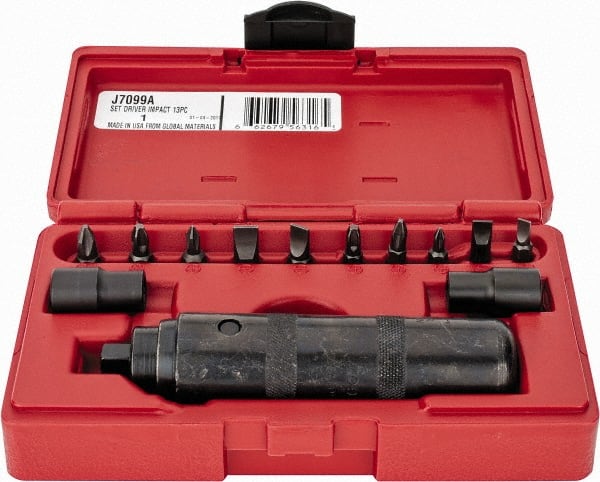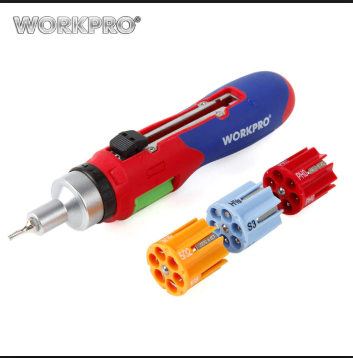OK seriously, what makes a great screwdriver? I am a fan of the ChannelLock set you can get for $20, so lets take them as an example. First, the set has 8 drviers, not 28. Too many just makes clutter. This design has 3 important elements for me:
- Tempered tips: Look for a tip that has been hardened in some way, as well as having a surface that grips. This will extend the life of the driver because it will not round-off or bend.
- High-torque handles: Look for triangular handles, or handles with deep facets that allow you to grip well even when wearing gloves.
- Full-length blades: The steel extends through the handle, ending in a metal cap. This allows the driver to be flipped over to tap something into place, like setting a screw into drywall. The ends can also be magnetized for picking up dropped screws. When the drivers get swapped out of active duty, they become nice chisels for doing bad things.

There are a few things the ChannelLocks don't offer, so lets look at a set from Wiha.

This set adds an octagonal hex base that allows you to use a crescent wrench to add more torque to the driver. This can also be done with square-shaft drivers like the classic Craftsman. This feature is found on a lot of cheap drivers, but without a strong tip, it is useless and will damage the driver. Lets take a look at some other features from Klein:
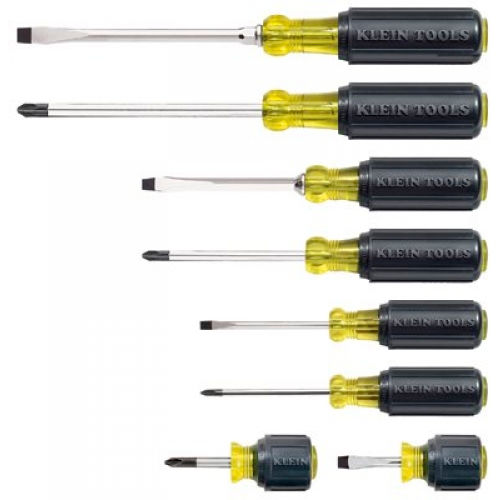
This set from Klein adds two stubby drivers, which are the only other sizes that I recommend when purchasing a set of drivers. Great for tight spaces. They also add insulated rubber handles, which help protect against accidental electrical shocks. Full-shaft drivers are apt to deliver that shock straight to your wrist, so use caution. If you are doing a lot of electrical work, get fully insulated screwdrivers.

Rubber outer grips are a concern on cheap drivers. The rubber can easily disconnect from the handle and just spin around, making the tool useless. The rubber can also hide the shaft inside the handle, and this is important. The shaft has to have big, flat lugs inside of the handle for leverage and strength. If you can't see them, they are probably small and will soon tear out and the tool will be junk. Cheap Chinese knockoffs will have small stamped impressions that don't anchor the shaft to the handle well at all. They are also often chrome-plated, which flakes off and makes the tool useless. Think about how the twisting force is being imparted to the screw and buy a model with a good shaft/lug design, like these:

Also, most things like brake rotors don't need a HUGE screwdriver to break loose, they need an impact driver. So don't get a set with 12 sizes just to get that one big oner you want, buy the basic 2-4 sizes in each style, then grab a big one of each. Add to that set an impact driver...
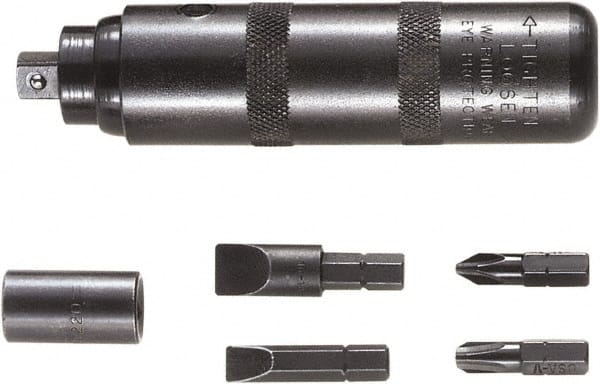
And then a set of fine screwdrivers for the smaller stuff.
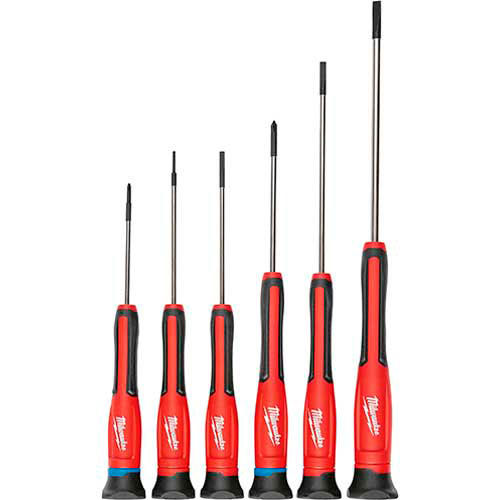
And if you need a prybar, use a prybar!







